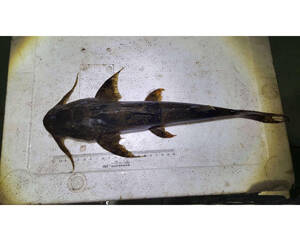
The Latin name of the giant yarrelli is Bagarius yarrelli, which belongs to the order Siluriformes, family Scyphidae, and the genus Scyphus.The food is mainly small fish. It is slow-moving and greedy, and can be caught with a dragnet or sinking hook. Individuals are large, weighing more than 50kg. T...
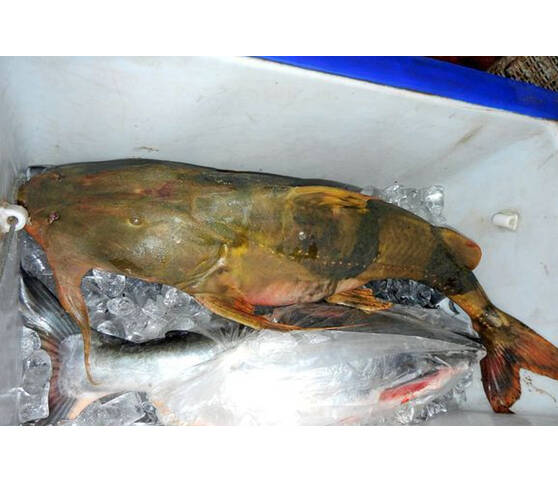
The name of the red mullet comes from the orange color on its pectoral fins, not because it is produced in the Red River.The red mullet is ferocious and predatory. It mainly feeds on small fish, frogs and shrimps. It breeds around May to June.The biggest difference between the red catfish and the gi...

The Latin name of the fish is Bagarius bagarius, which is one of the species of the genus Bagarius in the family Siluridae of the order Siluriformes of the class Actinopterygii. It is commonly known as the melon fish.The fish is a carnivorous fish, fierce and predatory. It feeds on mollusks and smal...
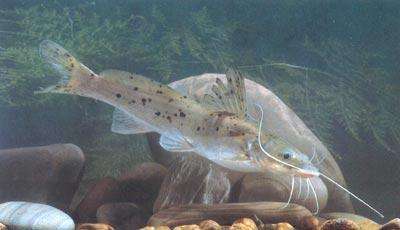
Mystus guttatus is a species of the genus Mystus in the family Myscidae. It is also called shad, sesame shad, white-bearded shad, and swordfish and pliers in rural Guangdong. It is large in size, with common individuals weighing 1-2 kg, and some large ones weighing 5-10 kg, and the largest can reach...
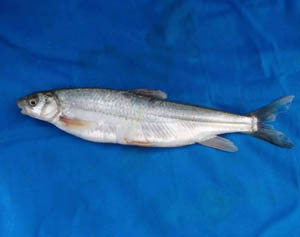
Bone Lip Yellow River Fish Latin scientific name Chuanchia Labiosa, foreign name Huanghe Naked Carp, no subtype.Bone lips Yellow river fish are mainly eaten with raw diatom and insects.Each egg produces about 2700 capsules with a mature female eggs with a length of about 200 mm in length, which is y...
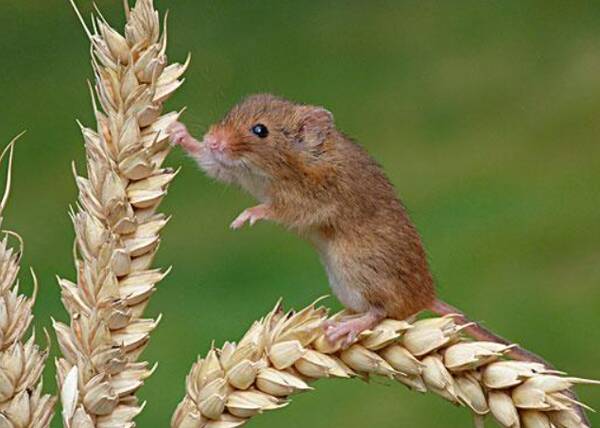
The nest mouse belongs to the Murinae subfamily. There are only two species in the world, and both are distributed in my country. The taxonomic status of the nest mouse is stable, but there are many subspecies, which is somewhat controversial. It is a common species in wheat fields, rice fields, tal...

The scientific name of the Great White Shark is Carcharodon carcharias, and its foreign name is Great White Shark. There are no subspecies.The relationship between the Great White Shark and other genera in its family is controversial. Two systematic arrangements have been proposed. One holds that it...
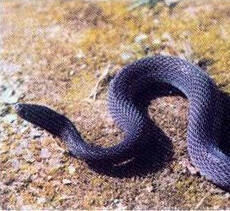
Achalinus jinggangensis is a small snake, which is unique to my country. Most of the snakes in the family Colubridae are non-venomous snakes, and the same is true for Jinggangshan Ridge Snake.There is very little research data on Jinggangshan Ridge Snake, and the number is also scarce. Only four ind...

Four-eyed turtle is called Four-eyed Turtle in foreign language, and has no subspecies.In nature, four-eyed turtles like to live in pits and ditches in mountainous and hilly areas, and often live in dark places, such as under stones and in tree roots. The four-eyed spotted turtle is very timid. Once...
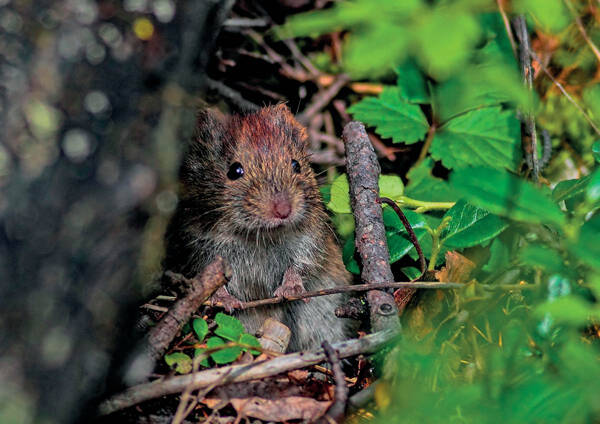
Red-backed voles belong to the subfamily Microtiinae. The species-level classification status is stable, and there are many subspecies differentiations. There are 2 subspecies in China. It is a typical cold-resistant species in the north. The population in meadows and wetlands in coniferous forests...
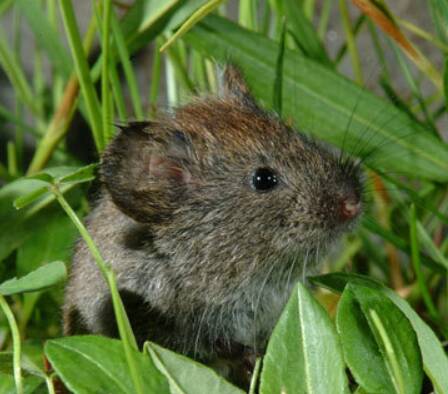
The brown-backed croaker belongs to the subfamily Arvicolinae. The species status is very stable, but the genus status is controversial. The species was named in 1846, and Miller (1900) established the subgenus <Craseomys> and regarded the brown-backed croaker as the only species of the subgen...
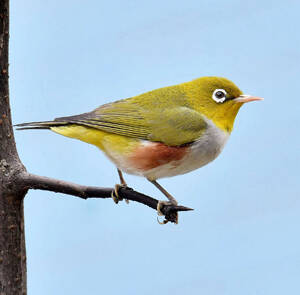
Chestnut-flanked White-eye, no subspecies.Chestnut-flanked White-eye often moves alone, in pairs or in small groups. They like to move in groups during the migration season and winter, sometimes with up to 50-60 birds. It shuttles and jumps between branches and flowers in secondary forests and shrub...
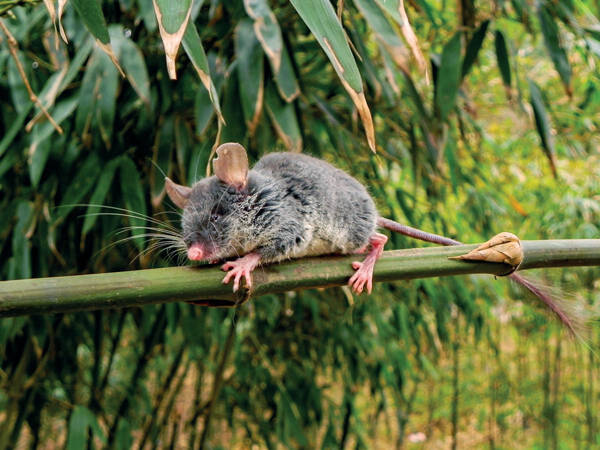
The giant pig-tailed rat belongs to the Platacanthomyidae family, a very unique and ancient family. There are only 2 genera and 6 species, 4 of which are in China. The 4 species in China originally only had one pig-tailed rat (<Typhlomys cinereus>), the type locality is Fujian, of which there...
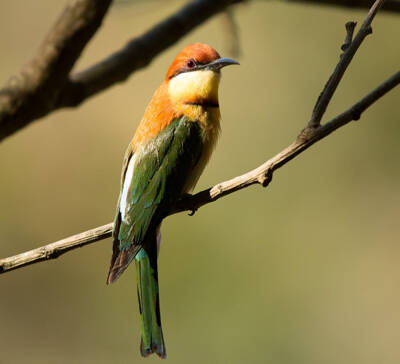
Chestnut-headed Bee-eater, also known as Chestnut-headed Bee-eater, has 3 subspecies.The chestnut-headed bee-eater migrates to southeastern China in summer, living in hills or woodlands. It mostly flies and hunts in the air, accompanied by a trilling call, and sometimes stands on the top branches of...

Blue-throated bee-eater, also known as Blue-throated bee-eater, has 2 subspecies.Blue-throated bee-eaters often move alone or in small groups, often flying in the sky to find food, and often resting on trees or wires.The migration time of the blue-throated bee-eater is from April to May in spring an...
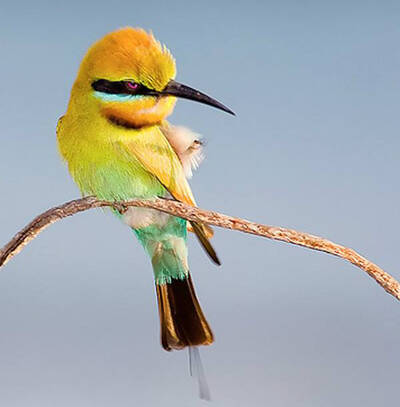
Rainbow Bee-eater, also known as Rainbow Bee-eater, is a medium-sized green bee-eater with no subspecies.Rainbow Bee-eater mainly preys on bees and wasps. Other prey include butterflies, moths, damselflies, dragonflies, beetles and most flying insects. They mostly forage in flight, quickly swooping...
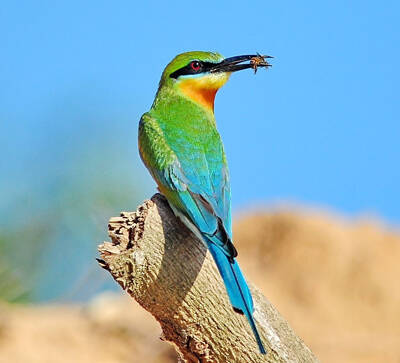
Blue-tailed Bee-eater, no subspecies.Blue-tailed Bee-eater is a resident bird in southwestern Yunnan and Hainan Island, China, and a summer migratory bird in other areas. It migrates in April-May and leaves in September-October.Chestnut-throated bee-eaters usually move in groups of several to dozens...
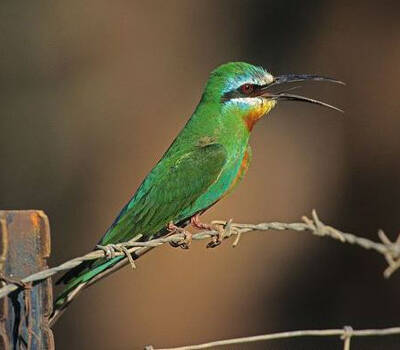
Blue-cheeked Bee-eater, also known as Blue-cheeked Bee-eater, has two subspecies.At dusk or after the rain, large groups of blue-cheeked bee-eaters will fly in the air to chase flying insects, especially when there are breeding termites flying around. The sound of the upper and lower jaws beating ca...
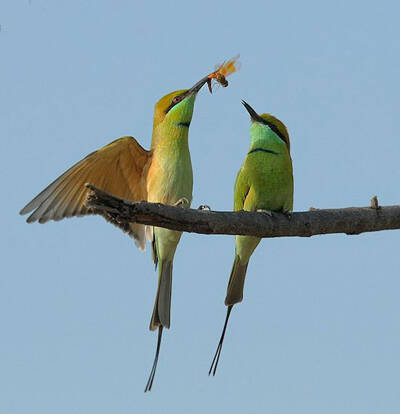
Green Bee-eater, also known as Green Bee-eater in English, is a small bird with 9 subspecies.The green-throated bee-eater is a resident bird that moves in small groups. It is often seen perching on flying insects and suddenly rushing into the air to bite them. After catching the flying insects, it w...